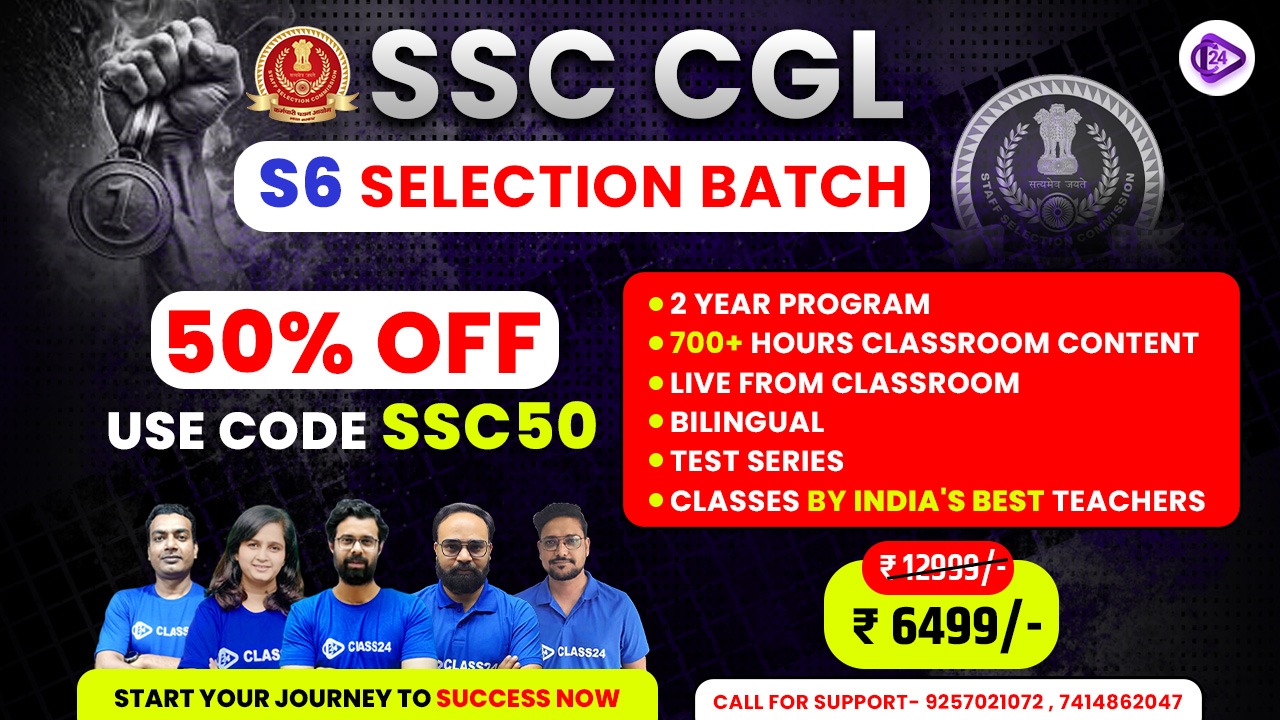1. Exploration of Coal and Lignite scheme
Recently, the union government of India approved the continuation of the central sector plan 'Exploration of Coal and Lignite scheme' with an estimated expenditure of ₹2,980 crore.
.png)
About Exploration of Coal and Lignite Scheme:
- The period for the extension is from 2021-22 to 2025-26.
- Under this scheme, exploration for coal and lignite is conducted in two broad stages: (i) Promotional (Regional) Exploration and (ii) Detailed Exploration in non-Coal India Limited blocks.
Benefits of the scheme
- This scheme is required to prove and estimate coal resources available in the country, which helps in preparing detailed project reports to start coal mining.
- The geological reports prepared through these explorations are used for auctioning new coal blocks, and the cost is thereafter recovered from successful allocatee.
What are the types of Coal?
Anthracite: It contains the highest amount of carbon out of all coal ranks (86%-97%) and it is used mostly in industrial settings and the metals industry due to its high heat value.
Lignite: it is lighter in colour than the higher ranks of coal. It has the lowest carbon content out of all the coal ranks (25%-35%) and it has a high moisture content and crumbly texture.
Bituminous: It has slightly lower carbon content than anthracite (45%-86%)1. The wide range of carbon content in bituminous coal warrants uses for both electricity and steel production.
Peat: It is the starting stage of a coal formation which has low calorific value and low carbon content.
2. Pradhan Mantri Krishi Sinchayee Yojana (PMKSY)
Under the Pradhan Mantri Krishi Sinchayee Yojana, Aadhaar cards being misused to create beneficiaries under Per Drop More Crop Scheme in Jharkhand state has been revealed.
.jpg)
About Pradhan Mantri Krishi Sinchayee Yojana:
- It was launched in 2015 to improve farm productivity and ensure better utilization of the resources in the country.
Objectives
- Convergence of investment in irrigation at the field level
- Expand cultivable area under irrigation
- Improve On-farm water use efficiency to reduce the wastage of water
- Enhance the adoption of being precise in irrigation and other water-saving technologies (more crop per drop)
- It consists of two major components namely,
- Accelerated Irrigation Benefit Programme (AIBP)
Har Khet Ko Pani (HKKP):
- It consists of four sub-components, being Command Area Development & Water Management (CAD&WM), Surface Minor Irrigation (SMI), Repair, Renovation and Restoration (RRR) of Water Bodies, and Ground Water (GW) Development component.
- In addition, PMKSY also consists of two components
- Per Drop More Crop (PDMC) component is being implemented by the Department of Agriculture and Farmers Welfare.
- The Watershed Development component (WDC) is being implemented by the Department of Land Resources
3. Convention on the Conservation of Migratory Species of Wild Animals (CMS)
According to a recent UN Report, Noise pollution is known to cause significant disturbance to marine wildlife, including migratory species protected under the Convention on the Conservation of Migratory Species of Wild Animals (CMS).
.jpg)
About Convention on the Conservation of Migratory Species of Wild Animals (CMS):
- CMS also referred to as the Bonn Convention, is an environmental treaty under the aegis of the United Nations Environment Programme.
- It was signed in Bonn, Germany, on 23 June 1979.
- It provides a global platform for the conservation and sustainable use of migratory animals and their habitats.
- CMS is the only global and UN-based intergovernmental organisation established exclusively for the conservation and management of terrestrial, aquatic and avian migratory species throughout their range.
- The parties to the convention acknowledge the importance of conserving migratory species, and the need to pay special attention to species whose conservation status is unfavourable.
- Activities by CMS Parties may range from legally binding treaties (called Agreements) to less formal instruments, such as Memoranda of Understanding.
- The Conference of Parties (COP) is the decision-making organ of this convention.
- CMS has two Appendices. These appendices list migratory species to which the Convention applies.
- Appendix I lists endangered migratory species and includes prohibitions regarding the take of these species.
- Appendix II lists species that have an ‘unfavourable conservation status’ (as per the conditions set out in the Convention) and encourages range states to draft range-wide agreements for conservation and management of these species.
India and CMS:
- India has been a party to the CMS since 1983.
- India has also signed non-legally binding MOU with CMS on the conservation and management of Siberian Cranes (1998), Marine Turtles (2007), Dugongs (2008) and Raptors (2016).
4. What is First Loss Default Guarantee (FLDG)?
The Reserve Bank of India (RBI) has recently granted its approval for First Loss Default Guarantee (FLDG) framework.
.png)
About First Loss Default Guarantee (FLDG):
- What is it? FLDG is a lending model between fintech firms and their partner banks and non-banking finance companies where the initial hit on a default is taken by the fintech firm that originated the loan.
- Under these agreements, the fintech originates a loan and promises to compensate the partners up to a pre-decided percentage in case customers fail to repay.
- The bank/NBFC partners lend through the fintech but from their books.
Advantages:
- FLDG helps expand the customer base of traditional lenders but relies on the fintech's underwriting capabilities.
- It will also rationalise the existing prudential norms to implement resolution plans in respect of exposures affected by natural calamities.
What is FinTech?
- Fintech, a combination of the terms “financial” and “technology,” is the application of new technological advancements to products and services in the financial industry.
- It refers to the application of software and hardware to financial services and processes, making them faster, easier to use and more secure.
- The fintech industry includes everything from payment processing solutions to mobile banking apps.
- Some examples include mobile banking, peer-to-peer payment services, automated portfolio managers or trading platforms.
5. Turkmenistan–Afghanistan–Pakistan–India (TAPI) Pipeline
To speed up work on Turkmenistan, Afghanistan, Pakistan, and India (TAPI) gas pipeline project and finish the feasibility study as soon as possible, Pakistan and Turkmenistan recently signed a Joint Implementation Plan (JIP).
.jpg)
About TAPI Pipeline:
- It is an 1,814-kilometre pipeline that aims to transport 33 billion cubic metres of gas from Turkmenistan to Afghanistan, Pakistan and finally, India.
- It is also called the ‘Peace Pipeline’.
Route:
- It will start from the Galkynysh gas field in Turkmenistan.
- It will then pass through Afghanistan and Pakistan to finally reach the Indian town of Fazilka(near the Indo-Pak border).
Capacity:
- At full capacity, the pipeline will transport 33 billion cubic meters (bcm) of natural gas annually from TKM to respective buyers in AFG (5%), PAK (47.5%) and IND (47.5%) during the 30-year commercial operations period.
- The Project comprises the procurement, installation and operation of the pipeline and related facilities within Afghanistan and Pakistan.
Timeline:
- The project was originally conceived in the 1990s, and an inter-governmental agreement was signed in 2010 by the heads of four member nations.
- A Gas Pipeline Framework Agreement was signed in December 2010, and a bilateral gas sale agreement was signed in May 2013.
- In February 2018, a ground-breaking ceremony for Afghanistan's section of the TAPI gas pipeline was held in the western Afghan city of Herat.
Financing:
- The TAPI project is being funded by the Asian Development Bank (ADB), which is also acting as transaction adviser for the development.
- Turkmenistan took a loan of $700m from the Islamic Development Bank for financing the project in December 2016.
- The remaining three countries made an initial investment of $200m in the TAPI project.
As always, if you have any questions or feedback, we’d love to hear from you. You can reach us on support@class24.study or
Call support - +91 78498 41445,+91 83029 72601,+91 78775 18210
- Download Class24 App for Updated Current Affairs, Free Topic-Wise Quizzes, and Free Mini Mocks
- Download Free Study Material Here
Let's connect with CLASS24
🚀 Download the Class24 App here:
Related Article: Best Online learning platform in India
1. कोयला और लिग्नाइट योजना की खोज
हाल ही में, भारत सरकार ने 2,980 करोड़ रुपये के अनुमानित व्यय के साथ केंद्रीय क्षेत्र की योजना 'कोयला और लिग्नाइट योजना की खोज' को जारी रखने की मंजूरी दी।
.png)
कोयला और लिग्नाइट योजना के अन्वेषण के बारे में:
- विस्तार की अवधि 2021-22 से 2025-26 तक है।
- इस स्कीम के अंतर्गत कोयला और लिग्नाइट के लिए अन्वेषण दो व्यापक चरणों में किया जाता है- (i) संवर्धनात्मक (क्षेत्रीय) अन्वेषण और (ii) गैर-कोल इंडिया लिमिटेड ब्लॉकों में विस्तृत अन्वेषण।
योजना के लाभ
- इस योजना के लिए देश में उपलब्ध कोयला संसाधनों को साबित करने और अनुमान लगाने की आवश्यकता होती है, जो कोयला खनन शुरू करने के लिए विस्तृत परियोजना रिपोर्ट तैयार करने में मदद करता है।
- इन अन्वेषणों के माध्यम से तैयार की गई भूवैज्ञानिक रिपोर्टों का उपयोग नए कोयला ब्लॉकों की नीलामी के लिए किया जाता है, और उसके बाद लागत को सफल आबंटिती से वसूल किया जाता है।
कोयले के प्रकार क्या हैं?
एंथ्रेसाइट: इसमें सभी कोयला रैंकों (86% -97%) में से कार्बन की उच्चतम मात्रा होती है और इसका उपयोग ज्यादातर औद्योगिक सेटिंग्स और धातु उद्योग में इसके उच्च गर्मी मूल्य के कारण किया जाता है।
लिग्नाइट: यह कोयले के उच्च रैंक की तुलना में रंग में हल्का है। इसमें सभी कोयला रैंकों (25% -35%) में से सबसे कम कार्बन सामग्री है और इसमें उच्च नमी सामग्री और क्रमबद्ध बनावट है।
बिटुमिनस: इसमें एंथ्रेसाइट (45% -86%) की तुलना में थोड़ा कम कार्बन सामग्री है। बिटुमिनस कोयले में कार्बन सामग्री की विस्तृत श्रृंखला बिजली और इस्पात उत्पादन दोनों के लिए उपयोग की गारंटी देती है।
पीट: यह एक कोयला गठन का प्रारंभिक चरण है जिसमें कम कैलोरी मूल्य और कम कार्बन सामग्री होती है।
2. प्रधानमंत्री कृषि सिंचाई योजना (पीएमकेएसवाई)
प्रधानमंत्री कृषि सिंचाई योजना के तहत झारखंड राज्य में प्रति बूंद अधिक फसल योजना के तहत लाभार्थी बनाने के लिए आधार कार्ड का दुरुपयोग किए जाने का खुलासा हुआ है।
.jpg)
प्रधानमंत्री कृषि सिंचाई योजना के बारे में:
- यह 2015 में कृषि उत्पादकता में सुधार और देश में संसाधनों के बेहतर उपयोग को सुनिश्चित करने के लिए शुरू किया गया था।
उद्देश्यों
- क्षेत्र स्तर पर सिंचाई में निवेश का अभिसरण
- सिंचाई के तहत खेती योग्य क्षेत्र का विस्तार करें
- पानी की बर्बादी को कम करने के लिए ऑन-फार्म पानी उपयोग दक्षता में सुधार
- सिंचाई और अन्य जल-बचत प्रौद्योगिकियों (प्रति बूंद अधिक फसल) में सटीक होने को अपनाने में वृद्धि करें
- इसमें दो प्रमुख घटक होते हैं,
- त्वरित सिंचाई लाभ कार्यक्रम (एआईबीपी)
हर खेत को पानी (एचकेकेपी):
- इसमें चार उप-घटक शामिल हैं, कमांड एरिया डेवलपमेंट एंड वाटर मैनेजमेंट (सीएडी एंड डब्ल्यूएम), सतही लघु सिंचाई (एसएमआई), जल निकायों की मरम्मत, नवीकरण और बहाली (आरआरआर), और भूजल (जीडब्ल्यू) विकास घटक।
- इसके अलावा, PMKSY में दो घटक भी शामिल हैं
- कृषि और किसान कल्याण विभाग द्वारा प्रति बूंद अधिक फसल (पीडीएमसी) घटक कार्यान्वित किया जा रहा है।
- वाटरशेड विकास घटक (WDC) भूमि संसाधन विभाग द्वारा कार्यान्वित किया जा रहा है
3. जंगली जानवरों की प्रवासी प्रजातियों के संरक्षण पर सम्मेलन (सीएमएस)
संयुक्त राष्ट्र की एक हालिया रिपोर्ट के अनुसार, ध्वनि प्रदूषण समुद्री वन्यजीवों के लिए महत्वपूर्ण अशांति पैदा करने के लिए जाना जाता है, जिसमें जंगली जानवरों की प्रवासी प्रजातियों के संरक्षण पर कन्वेंशन (सीएमएस) के तहत संरक्षित प्रवासी प्रजातियां शामिल हैं।
.jpg)
जंगली जानवरों की प्रवासी प्रजातियों के संरक्षण पर सम्मेलन (सीएमएस):
- सीएमएस को बॉन कन्वेंशन के रूप में भी जाना जाता है, संयुक्त राष्ट्र पर्यावरण कार्यक्रम के तत्वावधान में एक पर्यावरण संधि है।
- इस पर 23 जून 1979 को बॉन, जर्मनी में हस्ताक्षर किए गए थे।
- यह प्रवासी जानवरों और उनके आवासों के संरक्षण और स्थायी उपयोग के लिए एक वैश्विक मंच प्रदान करता है।
- सीएमएस एकमात्र वैश्विक और संयुक्त राष्ट्र-आधारित अंतर-सरकारी संगठन है जो विशेष रूप से स्थलीय, जलीय और एवियन प्रवासी प्रजातियों के संरक्षण और प्रबंधन के लिए स्थापित किया गया है।
- सम्मेलन के पक्षकार प्रवासी प्रजातियों के संरक्षण के महत्व को स्वीकार करते हैं, और उन प्रजातियों पर विशेष ध्यान देने की आवश्यकता है जिनकी संरक्षण स्थिति प्रतिकूल है।
- सीएमएस पार्टियों द्वारा गतिविधियां कानूनी रूप से बाध्यकारी संधियों (समझौते कहा जाता है) से लेकर कम औपचारिक उपकरणों तक हो सकती हैं, जैसे कि समझौता ज्ञापन।
- कॉन्फ्रेंस ऑफ पार्टीज (सीओपी) इस सम्मेलन का निर्णय लेने वाला अंग है।
- सीएमएस के दो परिशिष्ट हैं। ये परिशिष्ट प्रवासी प्रजातियों को सूचीबद्ध करते हैं जिन पर कन्वेंशन लागू होता है।
- परिशिष्ट I लुप्तप्राय प्रवासी प्रजातियों को सूचीबद्ध करता है और इसमें इन प्रजातियों के लेने के संबंध में निषेध शामिल हैं।
- परिशिष्ट II उन प्रजातियों को सूचीबद्ध करता है जिनके पास 'प्रतिकूल संरक्षण स्थिति' है (कन्वेंशन में निर्धारित शर्तों के अनुसार) और रेंज राज्यों को इन प्रजातियों के संरक्षण और प्रबंधन के लिए रेंज-वाइड समझौतों का मसौदा तैयार करने के लिए प्रोत्साहित करता है।
भारत और सीएमएस:
- भारत 1983 से सीएमएस का एक पक्ष रहा है।
- भारत ने साइबेरियन क्रेन (1998), समुद्री कछुए (2007), डुगोंग्स (2008) और रैप्टर्स (2016) के संरक्षण और प्रबंधन पर सीएमएस के साथ गैर-कानूनी रूप से बाध्यकारी समझौता ज्ञापन पर भी हस्ताक्षर किए हैं।
4. फर्स्ट लॉस डिफॉल्ट गारंटी (एफएलडीजी) क्या है?
भारतीय रिजर्व बैंक (आरबीआई) ने हाल ही में फर्स्ट लॉस डिफॉल्ट गारंटी (एफएलडीजी) फ्रेमवर्क के लिए अपनी मंजूरी दे दी है।
.png)
फर्स्ट लॉस डिफॉल्ट गारंटी (एफएलडीजी) के बारे में:
- यह क्या है? एफएलडीजी फिनटेक फर्मों और उनके साझेदार बैंकों और गैर-बैंकिंग वित्त कंपनियों के बीच एक उधार मॉडल है, जहां डिफ़ॉल्ट पर प्रारंभिक झटका फिनटेक फर्म द्वारा लिया जाता है जिसने ऋण उत्पन्न किया था।
- इन समझौतों के तहत, फिनटेक एक ऋण प्राप्त करता है और ग्राहकों द्वारा चुकाने में विफल रहने की स्थिति में भागीदारों को पूर्व-निर्धारित प्रतिशत तक मुआवजा देने का वादा करता है।
- बैंक/एनबीएफसी साझेदार फिनटेक के माध्यम से लेकिन अपने बही-खातों से ऋण देते हैं।
लाभ:
- एफएलडीजी पारंपरिक उधारदाताओं के ग्राहक आधार का विस्तार करने में मदद करता है लेकिन फिनटेक की अंडरराइटिंग क्षमताओं पर निर्भर करता है।
- यह प्राकृतिक आपदाओं से प्रभावित जोखिमों के संबंध में समाधान योजनाओं को लागू करने के लिए मौजूदा विवेकपूर्ण मानदंडों को भी तर्कसंगत बनाएगा।
फिनटेक क्या है?
- फिनटेक, "वित्तीय" और "प्रौद्योगिकी" शब्दों का एक संयोजन, वित्तीय उद्योग में उत्पादों और सेवाओं के लिए नई तकनीकी प्रगति का अनुप्रयोग है।
- यह वित्तीय सेवाओं और प्रक्रियाओं के लिए सॉफ्टवेयर और हार्डवेयर के आवेदन को संदर्भित करता है, जिससे उन्हें तेज, उपयोग में आसान और अधिक सुरक्षित बनाया जाता है।
- फिनटेक उद्योग में भुगतान प्रसंस्करण समाधान से लेकर मोबाइल बैंकिंग ऐप तक सब कुछ शामिल है।
- कुछ उदाहरणों में मोबाइल बैंकिंग, पीयर-टू-पीयर भुगतान सेवाएं, स्वचालित पोर्टफोलियो प्रबंधक या ट्रेडिंग प्लेटफॉर्म शामिल हैं।
5. तुर्कमेनिस्तान-अफगानिस्तान-पाकिस्तान-भारत (तापी) पाइपलाइन
तुर्कमेनिस्तान, अफगानिस्तान, पाकिस्तान और भारत (तापी) गैस पाइपलाइन परियोजना पर काम में तेजी लाने और व्यवहार्यता अध्ययन को जल्द से जल्द पूरा करने के लिए, पाकिस्तान और तुर्कमेनिस्तान ने हाल ही में एक संयुक्त कार्यान्वयन योजना (जेआईपी) पर हस्ताक्षर किए।
.jpg)
तापी पाइपलाइन के बारे में:
- यह एक 1,814 किलोमीटर लंबी पाइपलाइन है जिसका उद्देश्य तुर्कमेनिस्तान से अफगानिस्तान, पाकिस्तान और अंत में भारत तक 33 बिलियन क्यूबिक मीटर गैस का परिवहन करना है।
- इसे 'पीस पाइपलाइन' भी कहा जाता है।
मार्ग:
- इसकी शुरुआत तुर्कमेनिस्तान के गाल्किनिश गैस फील्ड से होगी।
- इसके बाद यह अफगानिस्तान और पाकिस्तान से होते हुए भारतीय शहर फाजिल्का (भारत-पाक सीमा के पास) पहुंचेगा।
क्षमता:
- पूर्ण क्षमता पर, पाइपलाइन 30 साल की वाणिज्यिक संचालन अवधि के दौरान एएफजी (5%), पीएके (47.5%) और आईएनडी (47.5%) में संबंधित खरीदारों को टीकेएम से सालाना 33 बिलियन क्यूबिक मीटर (बीसीएम) प्राकृतिक गैस का परिवहन करेगी।
- परियोजना में अफगानिस्तान और पाकिस्तान के भीतर पाइपलाइन और संबंधित सुविधाओं की खरीद, स्थापना और संचालन शामिल है।
समयरेखा:
- इस परियोजना की मूल रूप से कल्पना 1990 के दशक में की गई थी, और 2010 में चार सदस्य देशों के प्रमुखों द्वारा एक अंतर-सरकारी समझौते पर हस्ताक्षर किए गए थे।
- दिसंबर 2010 में एक गैस पाइपलाइन फ्रेमवर्क समझौते पर हस्ताक्षर किए गए थे, और मई 2013 में एक द्विपक्षीय गैस बिक्री समझौते पर हस्ताक्षर किए गए थे।
- फरवरी 2018 में, पश्चिमी अफगान शहर हेरात में तापी गैस पाइपलाइन के अफगानिस्तान के खंड के लिए एक भूमि-ब्रेकिंग समारोह आयोजित किया गया था।
वित्तीयन:
- तापी परियोजना को एशियाई विकास बैंक (एडीबी) द्वारा वित्त पोषित किया जा रहा है, जो विकास के लिए लेनदेन सलाहकार के रूप में भी कार्य कर रहा है।
- तुर्कमेनिस्तान ने दिसंबर 2016 में परियोजना के वित्तपोषण के लिए इस्लामिक डेवलपमेंट बैंक से $ 700 मिलियन का ऋण लिया था।
- शेष तीन देशों ने तापी परियोजना में $ 200 मिलियन का प्रारंभिक निवेश किया।










